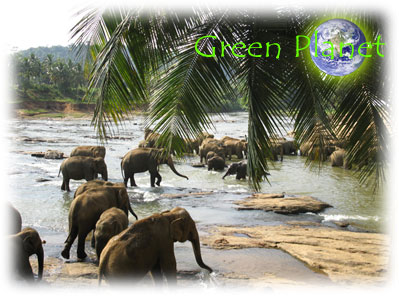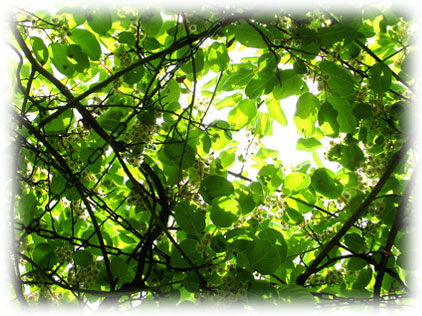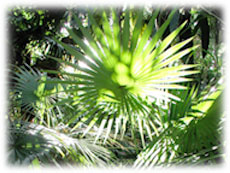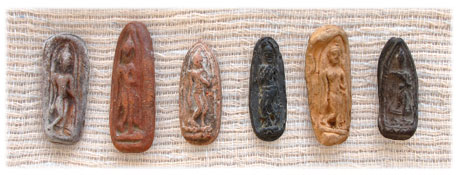

Rambles in Spring
Here in the Berkshire Hills of Massachusetts spring arrives in fits and starts. And no wonder. A sudden snowfall interrupts the wildflowers. ... (Continued)
A good alignment with Green Planet:
Brian Swimme, mathema-tical cosmo-logist and visionary author of The Universe is a Green Dragon and The Universe Story (with Thomas Berry) will speak with us about re-imagining a new world, one that is aligned with the intelligent, self-organizing, living Universe, so that instead of degrading the Earth's living systems, we can join the great interconnected community of living beings in a mutually enhancing embrace.
Great Video:
Dr Robert Sapolsky, a primato-logist, compares humans and animals with insight and humor. Consider the latest research and understanding of tool making, culture and The Golden Rule. It’s well worth listening to the entire 37 minutes. |
Great Video:
Using Nature’s Genius, Another inspiring TED talk
Michael Pawlyn describes three habits of nature that could transform architecture and society: radical resource efficiency, closed loops, and drawing energy from the sun. He has been instrumental in the Eden, Biome and Sahara Forest projects, great examples of how humanity can join with nature to make a sustainable, restorative, bio-inspired planet.
|
Bali Green School
Past the rice fields and encroaching commercial developments, down a lush shady driveway and across a jungle river via bamboo bridge we found Bali’s experiment in education, Green School, now in it’s third year and apparently thriving.
Kids learn about environmentally sustainable living from projects inside ecotopian structures and by working organic gardens from enthusiastic international teachers. Currently 135 students from east and west, plus local Balinese children by scholarship, learn together Montessori style in grades 1-8, but each year the school will grow organically to a complete 12 year program. (Continued)





Planetary Survival
The fostering of a plant-based ethic that emulates the way in which the botanical world uses and replaces resources is a sine qua non for planetary survival. All capitalistic models presuppose unlimited exploitable resources and labor pools, yet neither should now be assumed. I do not know the methods, but I suggest that we start turning to the plant world to discover the right questions to ask.
- Terence McKenna
The Next Great Step
The next great step toward a planetary holism is the partial merging of the technologically transformed human world with the archaic matrix of vegetable intelligence that is the Overmind of the planet.
-Terence McKenna
|
A Sufi interaction with Nature
by Yassir Chadly, story teller from Morocco
Near Casablanca, we have ocean that has nice waves and the water is warm and clear, so clean. And, I used to go there to do body surfing, just surf with the waves and I enjoyed doing that, and I enjoyed teaching that to all my neighbors, all the kids, I swim with the Moroccan National Team. And so, I was able to swim fast enough to catch the wave and then ride with the wave, it was such an enjoyable thing. And then one day I went there and the ocean was flat like a rug. There was no waves... (Continued)
|

Sharing Gardens
As many of our readers already know, Alpine, Oregon (where we live) has been host to a unique community garden for a year (and is heading into its second). What makes this 'sharing' garden unique is that, instead ofmany separate plots, that are rented by individuals, this garden is one large plot, shared by all. All materials and labor are donated - either by local individuals and families, or through grants from businesses and non-profit organizations. The food we grow is shared amongst those who have contributed in some way as well as others who are in need in our community. All surplus is donated to our local food-bank. No one is ever charged money for the food that is grown. We like to think of it as a 'Stone Soup' garden where each of us donates a little of our surplus --whether in time or materials--to grow a sense of community, and plenty of food to share.
These are teaching gardens as well. All food is grown without use of herbicides and pesticides. We rely on heavy mulching (to minimize the need for watering and weeding) and compost (made from yard and kitchen waste) to fertilize the soil. People who are interested in this project, if local, can join us in the garden and learn by doing. Our more distant supporters can follow these blog posts to pick up gardening tips and ideas, or learn how to start a Sharing garden in your own neighborhood.
Llyn Peabody and Chris Burns
"Sharing Gardens" Coordinators
(541) 847-8797
AlpineCoGarden@gmail.com
Turning over a new leaf
Leaves, grass clippings and other yard "waste" make excellent fertilizer for garden soil. We have been demonstrating this at the Sharing Gardens with vegetable yields in the tons (2012 Harvest Totals). My husband Chris also demonstrated a great increase in fertility using yard "waste" on his 5-acre farm in the high-desert country NE of Mt. Shasta, California (back in the 1980's - '90's). Within a short amount of time, using only leaves and grass clippings, alfalfa-powder that he collected from the floor of a pellet mill nearby, and a modest amount of goat and chicken manure from his own livestock, Chris turned volcanic soil, the consistency of beach-sand, into a garden that inspired Organic Gardening Magazine to write an article about him called "Defying the Odds on a High-Desert Oasis" (March 1991). Chris' gardens were so bounteous and beautiful that his farm was nicknamed "Findhorn West!"
We have already written several posts that go into great detail about the simple methods we use at the Sharing Gardens, using local materials, to increase fertility (links below). In essence, our method is to feed the soil with leaves, lawn-clippings, spoiled hay and vegetable scraps, weeds and the plants we pull at the end of the season to feed the "micro-livestock" (worms, bacteria and other "composters"). As these garden-partners eat their way through the yard and garden "waste" we provide for them, they fertilize the soil with their manure and create minute tunnels that keep the ground from compacting.
To read the full article and see a step-by-step guide to one of the methods we use at the Sharing Gardens to increase the fertility and tilth of the soil using a lot of grass clippings combined with dry leaves,Click on this link.
Other related posts from the Sharing Gardens:
Preparing Garden Beds - One Low-Tech Way
Hay-Bale Compost
More on Mulch
Mulch We Love, and Why
Benefits of Deep Mulching
Stories from the Wild Animal Kingdom
Nature is certainly evidence of an inspired planet. We celebrate and encourage meaningful interactions between man, plants and animals.
Wild Tigers roamed since prehistoric times from Siberia to India and Thailand. Those black stripes on gold, wide paws, thick tails and jeweled eyes are alluring, their strength and stealth admirable. Being at the top of the food chain and having no predators except man their numbers were plentiful till the 19th century. According to indigenous medicine lore tiger charms have sexual potency and the power to get things done. But the big cats are rare these days because of illegal game hunting and loss of habitat. Now there may be as few as 200 remaining in the Siamese jungle. Our intrepid charm hunter, Dudley, encountered 16 Bengal tigers in Thailand which were saved and are now being bred to return to the wild.

|
Harlequin Shrimp
We were fascinated by the life-enhancing experience of shrimp breeder, Nopphadol Senahan, spotted in the Bangkok Post.
“Previously, I was somewhat hot-tempered. I could not wait for anything. But after having engaged in my shrimp-breeding scheme for a number of years, I find that I have become more patient and calmer. More importantly, I have become more observant and thoughtful. I attribute all of my positive changes to my aquatic pets.
I’ve learned a lot, both scientifically and in matters of life. I’ve gleaned a wealth of knowledge of the Harlequin shrimp’s natural behaviors and its likes and dislikes. And when it comes to life’s lessons, I learned countless things, with my shrimps acting as my mentors. I’ve witnessed the impermanence of life through their birth, growth and deathc which prove that life emerges and then perishes. In their inimitable ways, the Harlequin shrimps under my care serve as a big textbook that I do not need to read. All I have to do is just observe them and behave proactively.
By nature, the Harlequin shrimp is a very loyal animal, like a swan. It is also faithful, and will live with its chosen mate throughout its life. Some shrimp die following the death of their partner. Whenever I see them pairing with their mate, I am deeply impressed. I myself also have just one true love. Normally, the Harlequin shrimp is rather slow moving, but it is extrememly agile when foraging for food. Likewise, I’m not an energetic person, but when I have to finish a piece of work, I dedicate myself to getting it done quickly.
My most torturous period was when I started breeding them on my own. I had to wake up at the same time with them but go to bed after them. And my sole sleeping place was in front of their tanks. At the same time, I did not know anything about this species, so I had to closely observe all of their behaviors, and I had to do that for three consecutive months. It took me two years to succeed in my breeding project. And the very first moment that I set eye on their babies, all my exhaustion evaporated. I was overwhelmed with happiness, pride and excitement.”
Vegas Goes Green
City Center Las Vegas was recently awarded first place at the 5th Annual Designing & Building with FSC Awards for 2009. Montbleau and Associates, one of the premier architectural wood working companies in the southwest United States, is part of that first place team for their contribution to the over $41 million worth of FSC certified wood products. They first became a member of the FSC in 1999 and have since become a leader in environmentally friendly construction. As LEED (Leadership in Energy & Environmental Design) construction grows in popularity and complexity Montbleau has been at the forefront of the movement to ensure that projects of the highest quality meet all necessary environmental criteria. As a millwork contractor, the majority of the FSC requirements for LEED credit often fall in their hands, so general contractors rely on their team of experts to ensure that these criteria are met. |
The Forest Stewardship Council (FSC)
“is an independent, non-governmental, not-for-profit organization established to promote the responsible management of the world’s forests.” It was started in the early 1990’s as way to track forest products to their source and to assure that those materials are ethically and environmentally harvested and managed. As concern for global deforestation grew the FSC became a pioneer in guaranteeing sound practices for responsible management of lumber & other forest products. By certifying companies throughout the supply chain from forest to fabrication, consumers can be confident that products carrying the FSC certification have been handled with the utmost of care & respect for the environment and the people that helped bring those products to market. A few principles and criteria that FSC adheres to include prohibiting the use of hazardous chemicals, respect of human rights with particular attention to indigenous peoples, and the appropriate management of areas that require special attention like cultural or sacred sites and endangered plant and animal habitats.
Recommended book:
What We Know About Climate Change
 Climate Change Climate Change |
The vast majority of scientists agree that human activity has significantly increased greenhouse gases in the atmosphere—most dramatically since the 1970s. In February 2007 the Intergovernmental Panel on Climate Change found that global warming is "unequivocal" and that human-produced carbon dioxide and other greenhouse gases are chiefly to blame, to a certainty of more than 90 percent. Yet global warming skeptics and ill-informed elected officials continue to dismiss this broad scientific consensus. In What We Know About Climate Change, MIT atmospheric scientist Kerry Emanuel outlines the basic science of global warming and how the current consensus has emerged. Although it is impossible to predict exactly when the most dramatic effects of global warming will be felt, he argues, we can be confident that we face real dangers. Emanuel, whose work was widely cited in media coverage of Hurricane Katrina, warns that global warming will contribute to an increase in the intensity and power of hurricanes and flooding and more rapidly advancing deserts.
Recommended book:
Divine Wind: The History and Science of Hurricanes
With exceptionally clear prose, Emanuel explains the atmospheric forces that restrict hurricanes to tropical latitudes and upends popular misconceptions about their frequency, noting that "the problem for research scientists is not why hurricanes develop, but why they hardly happen." Noting the genesis of many Atlantic hurricanes in easterly waves flowing off the Sahara Desert, Emanuel delves into the array of physical factors that impinge on the strength and direction of a tempest, points reinforced by a wealth of diagrams, satellite imagery, and a majestic photo-essay about flying into a hurricane. The science is reinforced by evocative artwork of storm-tossed ships and ravaged landscapes.
Physis- nature as the source of growth, change, development, becoming.
|
Clay Buddha Tablets & Siamese Magic Amulets:
 Of unknown antiquity, these images of various buddhas, folk idols and bodhisattvas were made of river clay (the earth beneath the water) by bhikus in the Theravadin monasteries of northern Thailand. An ancient alchemy of mixing empowered herbs and auspicious substances while reciting incantations is practiced by medicine monks. (Continued) Of unknown antiquity, these images of various buddhas, folk idols and bodhisattvas were made of river clay (the earth beneath the water) by bhikus in the Theravadin monasteries of northern Thailand. An ancient alchemy of mixing empowered herbs and auspicious substances while reciting incantations is practiced by medicine monks. (Continued)
|
|

